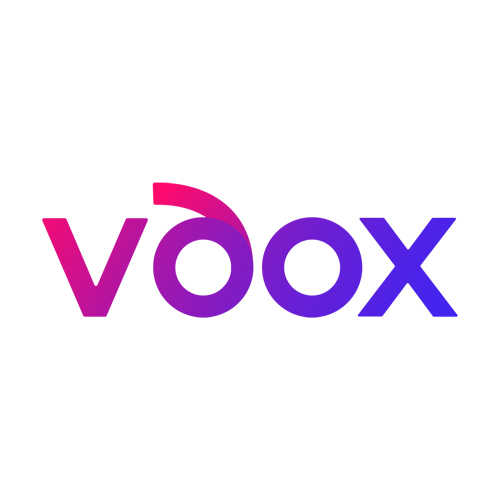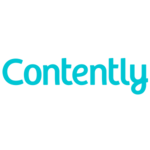What Is Content Distribution Platform?
For contemporary enterprises to efficiently manage and disseminate their digital material to a large audience, a material Distribution Platform (CDP) is a crucial tool. Businesses can effortlessly publish, share, and track their information across several channels, such as websites, social media, emails, and more, thanks to this single platform. Reaching their target audience and boosting their online presence can be difficult for businesses due to the growing number of digital platforms and material accessible.
By simplifying the distribution process, a CDP provides a solution that helps organizations save time and money. Based on demographics, hobbies, behavior, and other factors, this technology targets the appropriate audience using sophisticated algorithms and analytics. Additionally, it provides scheduling and automation tools that let companies organize and distribute their material ahead of time, guaranteeing efficiency and uniformity.
The capacity of a CDP to offer comprehensive analytics and insights is one of its primary advantages. Businesses may use this data to monitor the effectiveness of their content and modify their plans as necessary to increase reach and engagement. Additionally, a CDP makes it easier for team members engaged in content production and distribution to collaborate and communicate with one another.
It streamlines productivity and guarantees consistent branding and messaging by providing a centralized platform for content storage, organization, and collaboration. A CDP offers these advantages in addition to integrating with other marketing tools including social media management tools, email marketing platforms, and customer relationship management (CRM) software. This integration offers a more comprehensive approach to content marketing while streamlining the distribution process.
It is crucial to take into account aspects like the platform's functionality, convenience of use, integration potential, and cost when searching for a content distribution platform. All things considered, a CDP is a useful tool for companies trying to reach their target audience, disseminate their content efficiently, and eventually spur economic expansion.
What Are The Recent Trends In Content Distribution Platform?
The content distribution platform industry is always changing, therefore companies wishing to invest in this technology must keep up with the most recent developments. Buyers should be aware of the following recent developments in content distribution platforms:
1. Emphasis On Personalization: The move toward personalization is one of the main trends in content distribution systems. Because there is so much content on the internet, people are searching for recommendations that are relevant to their interests and tastes. Algorithms and artificial intelligence are being used by content distribution companies to provide users with tailored material in real time.
2. Rise Of Video Content: Content distribution platforms are not an exception to the widespread popularity of video content in the digital age. Businesses are understanding the potential of video content in reaching their target audience as a result of the growing popularity of platforms such as YouTube and TikTok. Because of this, platforms for content distribution are giving video content distribution top priority and providing capabilities like integrated video hosting and video optimization.
3. Integration With Social Media: Content distribution platforms are acknowledging the fact that social media has become an essential part of our everyday lives by integrating with a variety of social media platforms. This makes it possible to share content on social media with ease, boosting exposure and interaction. Some platforms even provide social media analytics, which let companies monitor how well their content is performing across various social media networks.
4. A Focus On A Mobile-First Strategy: Content distribution platforms are now giving priority to a mobile-first strategy since most internet consumers receive content via their mobile devices. This entails producing easily readable and screen-resolution-optimized information. In-app messaging and push notifications are two more specialized mobile capabilities that some platforms provide, which let businesses connect with their audience while they're on the go.
5. Transition To User-Generated Content: Content distribution platforms are paying attention to user-generated content (UGC), which has been increasingly popular in recent years. In addition to fostering a feeling of genuineness and trust, user-generated content (UGC) enables companies to leverage the inventiveness of their audience and boost interaction. Some platforms make it simpler for companies to locate and share user-generated content by providing UGC curation tools. Customers can select the platform that best meets their needs by being aware of these recent trends in content distribution platforms. Businesses may efficiently engage their target audience with targeted and engaging content and remain ahead of the competition by integrating these features and capabilities.
Benefits Of Using Content Distribution Platform
A software tool called a content distribution platform (CDP) helps companies produce and distribute their information across a variety of platforms, including blogs, websites, social media, and email. It is a vital component of any digital marketing plan because it provides a number of advantages to companies of all sizes. The main advantages of utilizing a content distribution platform and the reasons it is essential for your company.
1. Reach A Larger Audience: Reaching a larger audience is one of the biggest benefits of using a CDP. You can reach potential clients who might not be engaged on a single platform by sharing your material across multiple platforms. A CDP will guarantee that your material gets seen by your target audience on all platforms, for example, if they are primarily engaged on social media but you also produce blogs and email newsletters.
2. Raise Brand Awareness: CDPs are a great way to raise brand recognition. Regularly releasing top-notch content across several platforms will help you build your brand's reputation and position as an authority in your field. Additionally, sharing your material with a wide range of people might help you learn more about your company and attract new clients.
3. Save Time And Resources: It takes a lot of time and effort to manually post material on various channels. You can save time and money by automating this process with a CDP. Your material can be scheduled ahead of time, and it will be automatically sent to the channels of your choice at the designated time, freeing you up to concentrate on other facets of your business.
4. Customize Content: With the use of CDPs' sophisticated targeting and segmentation features, you can tailor your content to various audiences. You can customize your content to your audience's unique needs and boost engagement and conversions by breaking them up into groups according to their demographics, hobbies, and behavior.
5. Track And Analyze Performance: The majority of CDPs provide comprehensive tracking and analytics tools that give you important information about how well your content is doing. By monitoring engagement metrics like clicks, views, and shares across several channels, you can determine which ones are most useful for connecting with your target audience. You can improve the outcomes of your content distribution strategy by using this data.
6. Cost-Effective: A CDP may be an affordable way to distribute content. You can handle all of your content distribution requirements with a single platform rather than spending money on separate tools for every channel. This streamlines and improves the efficiency of your procedures while also saving you money.
Important Factors To Consider While Purchasing Content Distribution Platform?
There are a number of important considerations when selecting the best platform for content delivery. The success of your company could be significantly impacted by this choice, so it's critical to carefully consider all of your options. We've compiled a list of crucial elements to take into account when buying a content distribution platform so you can make an informed choice.
1. Coverage Of Content Distribution Networks (CDN): The platform's CDN coverage is among the most important things to take into account. Delivering your content to end users worldwide is the responsibility of CDN. Verify the platform's extensive and strong CDN presence to make sure your content can effectively and swiftly reach your target audience.
2. Multi-Format Support: Text, photos, and videos are just a few of the formats in which material is consumed in the modern digital world. All of these formats should be supported by the platform you select in order to meet the various needs of your audience.
3. User Interface And Usability: The platform's user interface (UI) should be simple to use and intuitive. As a buyer, you must make sure that the platform's user interface (UI) is easy to use so that you can distribute and manage your material without encountering any technological issues.
4. Analytics And Reporting: Information is essential for well-informed decision-making. As a result, selecting a platform that offers thorough analytics and reporting on the effectiveness of your content is crucial. You can better analyze your audience and adjust your content strategy with the aid of this tool.
5. Integration With Current Systems: Your website, e-commerce platform, or customer relationship management (CRM) system should all be able to easily interact with your content distribution platform. This integration will guarantee a seamless and efficient content distribution procedure in addition to saving you time and effort.
6. Customization Options: Your content distribution platform should be tailored to the distinct identity of each brand. To ensure that the dissemination of your material complies with your brand rules, look for a platform that provides customization choices.
7. Support And Customer Service: A content distribution platform may need to be troubleshooted or suffer technological problems, just like any other technology. To get any problems fixed quickly, pick a platform that offers great customer support and service.
8. Scalability And Cost: Finally, take into account the platform's scalability and cost. Selecting a platform that can expand to meet the demands of your company while staying within your budget is crucial.
What Are The Key Features To Look For In Content Distribution Platform?
Businesses and organizations who wish to reach their target audience and increase their reach across many online channels must have access to content distribution platforms. It can be difficult for consumers to select the best solution for their unique needs when there are so many options on the market. The following are the essential characteristics of a content distribution platform to assist you make an informed choice:
1. Integration Capabilities: When selecting a content distribution platform, the first factor to take into account is how well it integrates with your current tools and processes. It should work in unison with your social media platforms, analytics tools, content management system (CMS), and other crucial marketing software.
2. Targeting Options: To guarantee that your material reaches the appropriate audience, a quality content distribution platform should have sophisticated targeting choices. To narrow down your audience and increase the impact of your content, look for tools like interest-based targeting, demographic targeting, regional targeting, and retargeting.
3. Diverse Distribution Channels: You should be able to share your material on a number of platforms, including websites, display networks, email, and social media. This can help you accomplish your marketing objectives and guarantee that your material is seen by a large audience.
4. Content Scheduling And Automation: In the fast-paced digital world, time is of the essence. You may save a great deal of time and work by using a content distribution platform that has scheduling and automation functions. Choose a platform that lets you automate the distribution process, plan your content distribution in advance, and monitor the performance of your content in real time.
5. Customisable Reporting: To help you understand how well your material is performing, the top content distribution systems include customisable reporting. It need to offer comprehensive data on reach, interaction, and conversions for every channel you use to share your content. In order to make well-informed judgments on the distribution of your future material, this will assist you in determining what works and what doesn't.
6. User-Friendly Interface: A seamless and trouble-free experience with content distribution requires an interface that is easy to use. With clear instructions on how to use each feature, the platform should be simple to use. Distributing content can be difficult and time-consuming with a complicated and crowded interface.
7. Strong Support: There may be a learning curve with even the most user-friendly platforms, and you may eventually require assistance or direction. Choose a platform that provides dependable customer service by email, phone, or live chat. When you run into problems or have queries, a support staff that is informed and quick to respond can be invaluable.
Why Do Businesses Need Content Distribution Platform?
Content is king in today's digital environment. To draw in and keep their target audience, increase brand recognition, and boost conversions, businesses need a strong content strategy. But with so much material being created every day, it's getting harder for companies to stand out from the crowd and successfully connect with their target market. A platform for content distribution can help with this. A software or service that assists companies in expanding the reach of their content over several channels, including email, websites, and social media, is known as a content distribution platform. Businesses require a content distribution platform for the following main reasons:
1. Increase Content Reach: Producing excellent content is just half the fight. Getting it in front of the appropriate people is the other half. By spreading their content through a variety of channels, companies may reach a larger audience with the help of a content distribution platform. This helps them draw in new clients in addition to making their material more visible.
2. Targeted Distribution: Not every piece of material works effectively on every platform. Businesses can divide up their audience and adjust how they distribute their material by using a content distribution platform. This increases the likelihood that the material will connect with the audience and encourage conversions because it is being shared with the appropriate people at the appropriate time.
3. Cost-Effective: When compared to conventional advertising techniques, content distribution platforms provide a more affordable means for companies to connect with their target market. Businesses can accomplish their marketing objectives while saving time and money by distributing information across several platforms simultaneously.
4. Performance Tracking: Monitoring the effectiveness of content across many channels is a key benefit of utilizing a content distribution platform. Businesses can learn a great deal about the kind of material that appeals to their audience and make well-informed decisions about their future content strategy by tracking metrics like engagement, clicks, and conversions.
5. Consistency And Efficiency: A content distribution platform guarantees consistency across various platforms and expedites the distribution process. Businesses can save time and work by not having to manually post material on every platform. This enables them to concentrate on producing top-notch content rather than overseeing the distribution procedure.
How Much Time Is Required To Implement Content Distribution Platform?
The intricacy of your content distribution plan and the platform's particular features and needs can affect how long it takes to create a content distribution platform. The initial setup and integration procedure can take a few weeks to several months on average. You must first establish your content distribution objectives and create a plan for integrating the platform with your current systems and procedures in close collaboration with the platform provider.
This could entail building any required changes, adjusting settings, and creating accounts. In order to guarantee effective and dependable distribution of your information across several channels, content distribution platforms usually demand the development and optimization of content delivery networks (CDNs). This procedure entails optimizing server configurations, setting up caching protocols, and putting traffic control plans into action.
Additionally, you might need to use specific capabilities like A/B testing, content customisation, or geo-targeting, depending on your distribution needs. Because these features necessitate thorough planning and testing, they may prolong the deployment process. When choosing a content distribution platform, it is crucial to carefully evaluate your objectives and needs because this will affect how long it takes to deploy. The process can be streamlined and a successful installation can be ensured by collaborating closely with your platform provider and taking proactive measures to resolve any possible issues.
What Is The Level Of Customization Available In Content Distribution Platform?
Businesses may efficiently reach and interact with their target audience by using Content Distribution Platforms (CDPs), which are strong tools. The degree of customisation that a CDP offers is one of the most important things to take into account. What, therefore, does customization mean in a CDP context? The ability to modify a CDP to fit a company's unique requirements and preferences is known as customization.
This includes the capacity to target particular demographics, personalize information, and alter analytics and reporting. Delivering tailored information to various target audience segments is one of a CDP's primary advantages. This involves developing advertisements that are specifically targeted to certain demographics, interests, and behaviors. How specific and extensive these targeting choices can be depends on how customizable a CDP is.
Furthermore, personalization is essential to a CDP's overall user experience. Businesses can give their audience a distinctive and dependable brand experience with a highly configurable platform. This includes the option to alter the appearance and feel of landing pages and forms, as well as to incorporate unique branding components like logos and color schemes.
A decent CDP should include comprehensive reporting and analytics features in addition to frontend customization possibilities. This includes the capability to generate custom reports and dashboards, as well as the ability to monitor and evaluate user engagement and conversion data. Depending on the platform, a CDP may offer varying degrees of customisation.
While some might have a more limited feature set, others might provide more sophisticated customization choices. When selecting a CDP with the appropriate degree of customization, firms should carefully evaluate their needs and long-term objectives.
Which Industries Can Benefit The Most From Content Distribution Platform?
Distribution is the key to success when it comes to digital information. Even if your material is excellent and captivating, it won't make a difference if the wrong people aren't seeing it. A Content Distribution Platform (CDP) is useful in this situation. You may reach your target audience and encourage meaningful engagement by using CDPs, which offer a streamlined and effective method of distributing and promoting your content across many media.
However, which sectors stand to gain the most from a platform for content distribution? In actuality, CDPs are adaptable and useful instruments that might be advantageous for a variety of sectors. Nonetheless, integrating a CDP into their marketing and content strategy might yield notable benefits for specific businesses. First and foremost, a CDP has a lot to offer the publishing and media sectors.
Media firms must distribute their material efficiently and promptly due to the constantly increasing need for immediate and pertinent content. Through a variety of channels, including social media, email, and mobile, a CDP can assist expedite the publishing process and guarantee that information is reaching the intended audience. A CDP can also help eCommerce companies, especially those with a significant online presence.
A CDP can assist these platforms in distributing their product descriptions, promotional material, and user-generated content in a targeted and optimized way, which will enhance conversions and sales. These platforms rely significantly on content to draw in and keep customers. A CDP has the potential to revolutionize B2B companies.
B2B businesses must reach a specific audience and frequently have intricate sales cycles. These companies may improve lead generation and conversions by using a CDP to target and engage potential customers with customized messaging and content. A CDP can also have a big impact on the sports and entertainment sectors.
Social media and digital streaming have made content distribution more important than ever for these sectors. They can enhance viewership and fan interaction by using a CDP to help them reach a larger audience and maintain the accessibility and relevance of their content. Lastly, a CDP can be used by charities and nonprofits to raise awareness and advertise their cause to a wider audience.
By assisting these groups in producing and disseminating strong and captivating content, a CDP may increase their impact and reach. In conclusion, a content distribution platform can help all businesses, but it can be especially beneficial for media and publishing, eCommerce, business-to-business, entertainment and sports, and nonprofits in terms of reach, engagement, and conversions. Including a CDP in your marketing plan can help you accomplish your objectives and provide your company with a competitive advantage.
Conclusion
In conclusion, your entire marketing plan may be significantly impacted by your choice of content delivery platform. It's critical to take into account your unique requirements and objectives in addition to each platform's features, cost, and customer service. Finding the best solution for your business requires careful consideration and comparison of several options before making a decision.
To monitor the effectiveness of your material, look for platforms with a user-friendly interface, sophisticated targeting options, and comprehensive analytics. Additionally, consider the platform's scalability as your company expands and whether it works with the systems and technologies you already have. To make sure the platform fulfills your needs and fits with your marketing goals, spend some time testing it out with a free trial or demo.
You may efficiently reach your target audience and amplify your content with the correct content distribution platform, which will eventually increase conversions and help you realize your business objectives. Therefore, take your time, investigate potential platforms, and select one that will help your brand succeed.






















